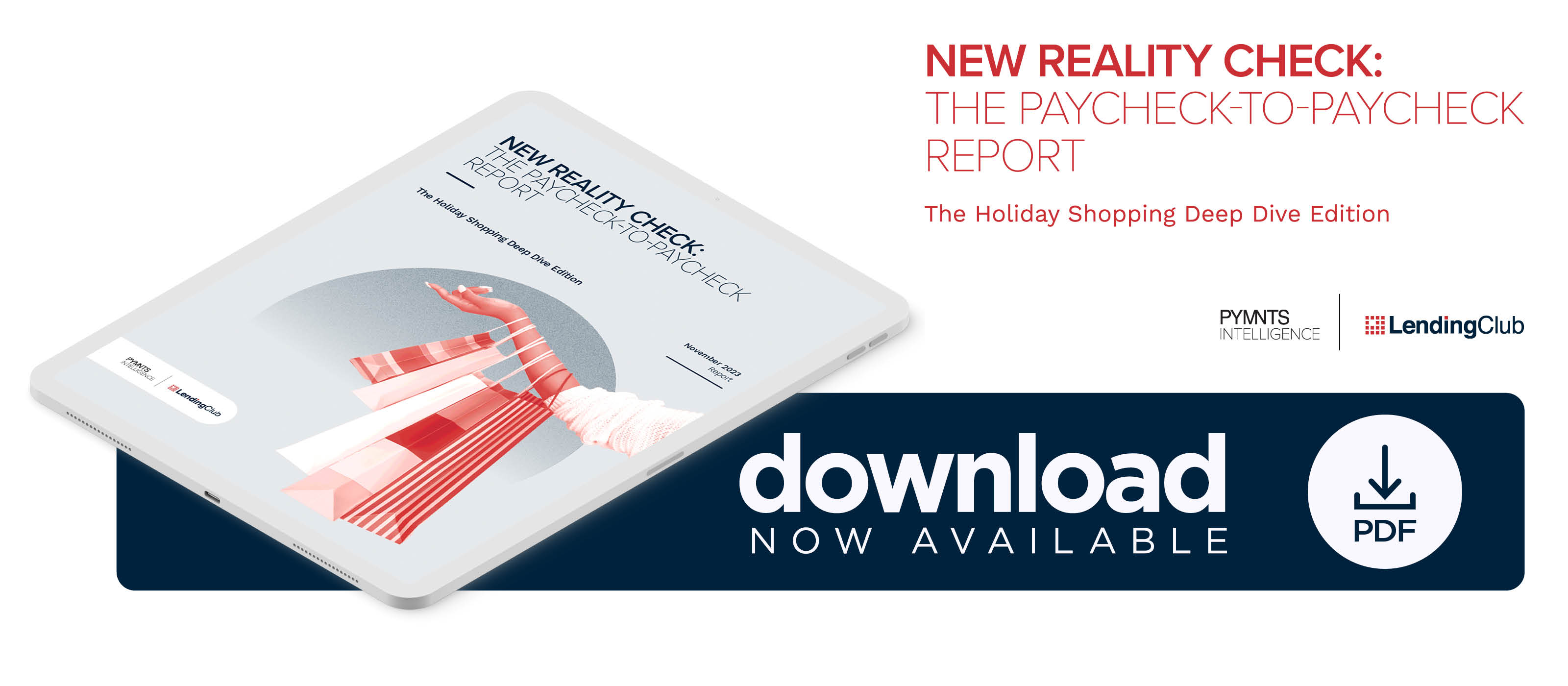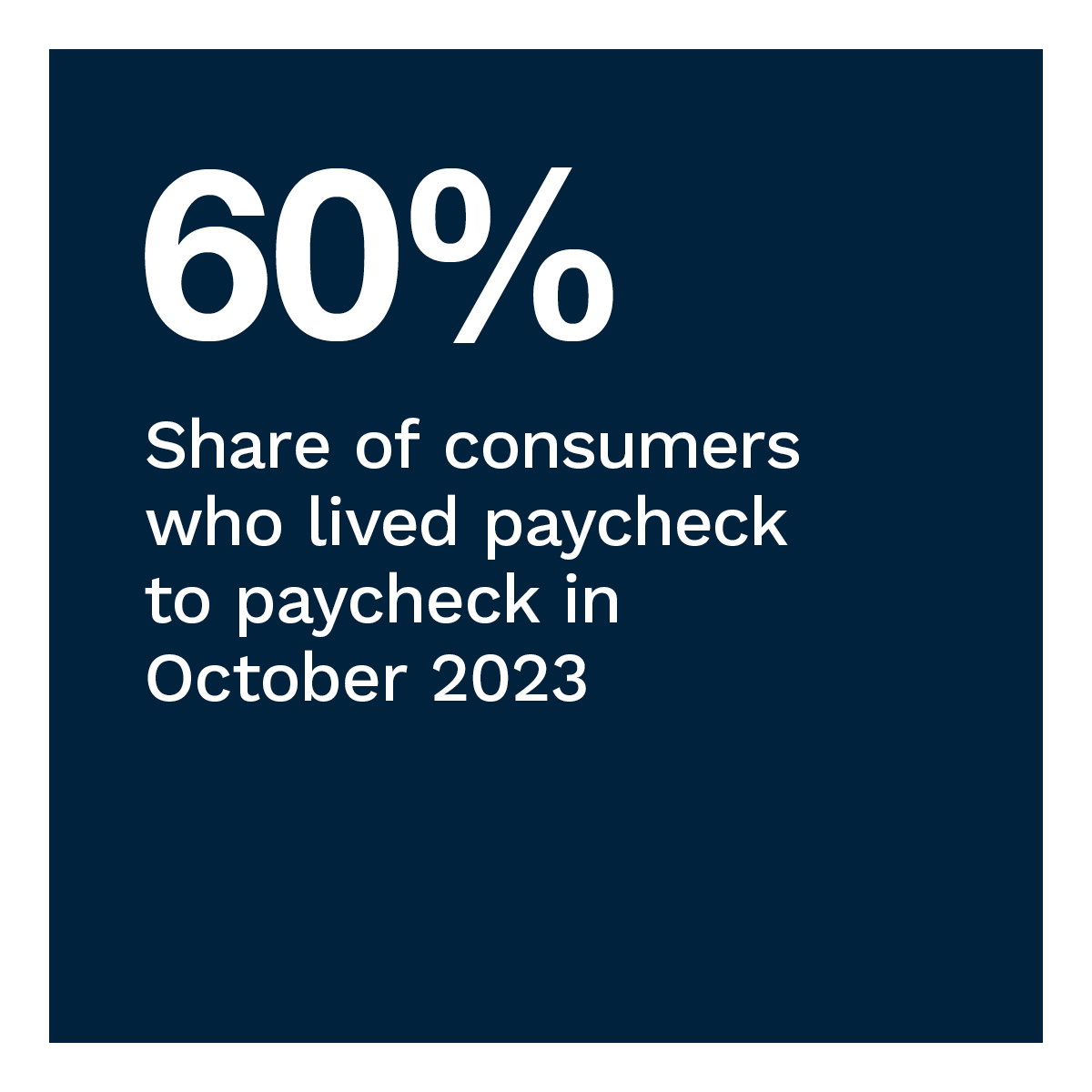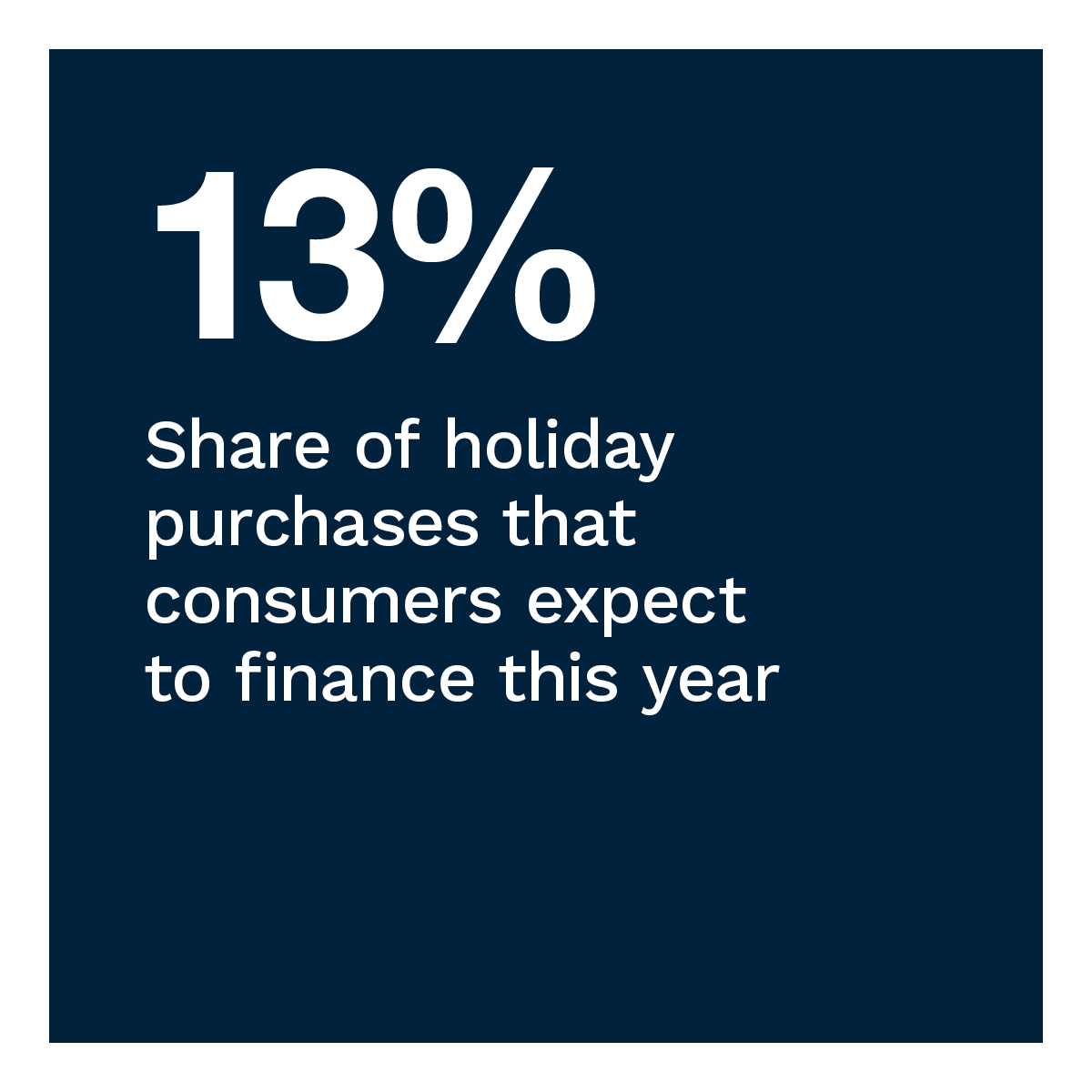4 in 10 Consumers Plan to Tap Into Savings to Cover Holiday Expenses

One month before the start of the holiday season, 60% of consumers lived paycheck to paycheck. Nineteen percent struggle to pay their monthly bills. These shares are virtually unchanged from last year, indicating that consumers have adjusted to the current economic environment. Even so, consumers still worry about the economy, and many report that they are worse off now than in 2022.
Such a gloomy outlook weighs on consumers’ expectations for the 2023 holiday season. The share of consumers planning to make holiday purchases is down slightly — at 77% compared to 78% last year. Several indicators point toward a more conservative stance on spending this year due to the change in economic conditions. For instance, consumers expect to finance 13% of holiday purchases, and 37% say they will use savings.
These are just some of the findings detailed in this edition of “New Reality Check: The Paycheck-to-Paycheck Report,” a PYMNTS Intelligence and LendingClub collaboration. The Holiday Shopping Deep Dive Edition examines U.S. consumers’ financial lifestyles and spending choices going into the holiday shopping season. This edition draws on insights from a survey of 3,640 U.S. consumers conducted from Oct. 3 to Oct. 19 and an analysis of other economic data.
Other key findings from the report include:
Consumers cite several reasons they expect their holiday shopping spend to be higher.
Twenty-two percent of consumers expect their spending to be higher, but most attribute this to higher prices. Twenty-three percent of consumers cite inflation as the top reason they expect to spend more this holiday season. Twenty-six percent cite they have more available funds. Paycheck-to-paycheck consumers struggling to pay their bills, at 27%, represent the financial lifestyle most likely to note higher prices as the top reason they will spend more. Meanwhile, Generation Z shoppers, at 44%, are the most likely to report an increased availability of funds will drive their higher spending.
Decreased spending capacity and more conservative budgets are the chief deterrents to spending this holiday season.
Sixty percent of consumers say access to fewer resources is the top reason they expect to spend less this holiday season. At the same time, 23% report they will be more conservative in their spending. Consumers who live paycheck to paycheck with issues paying bills are the likeliest to cite reduced spending capacity as the top reason, at 86%. Gen Z is the exception among age groups. They are the least likely to cite less spending capacity, at 43%, and more conservative spending, at 15%, as their top deterrents to spending this holiday season.
Overall, consumers expect to finance 13% of holiday shopping.
The appetite for using credit options has somewhat toned down, even among struggling consumers. The share of potential shoppers planning to use credit and the share of purchases they expect to finance are down across all demographics. Overall, 32% of shoppers expect to use one or more credit options, down from 37% in 2022. Consumers expect to use credit products for just 13% of holiday spending this year, compared to 15% last year. Consumers struggling to pay bills are once again the most likely to plan to use credit to cover holiday spending in 2023, at 43% — down from 50% in 2022. Their credit usage will account for 19% of their purchases this year, down from 26% last year.
With the holiday shopping season just around the corner, many struggling consumers plan to be more conservative in their spending. Download the report to learn how U.S. consumers living paycheck to paycheck will handle holiday shopping costs this year.
